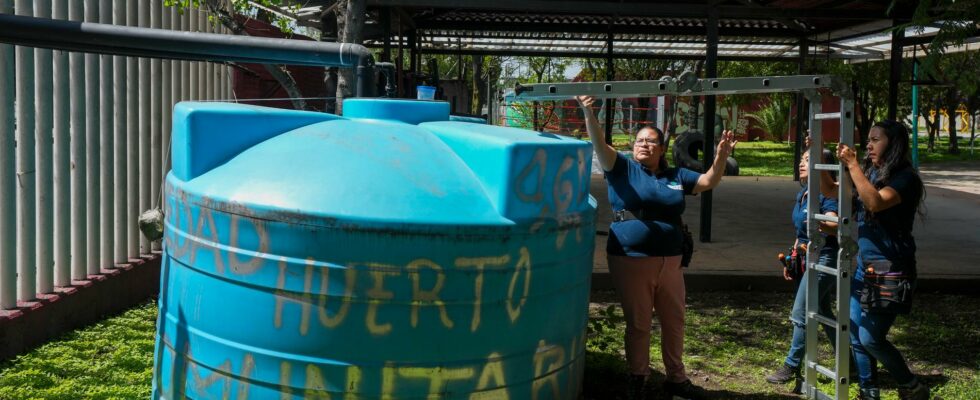unsaveSave
Members of the Pixcatl cooperative inspect the main tank of a water collection system in a public garden in Mexico City.
1 / 3Photo: Fernando Llano/AP/TT
Even in a modern metropolis, rainwater can be worth its weight in gold. In Mexico City, a group of women is trying to remedy the city’s water shortage – with rain-harvesting systems and education among the megacity’s 20 million inhabitants.
– I am always looking for places to install rainwater collection systems, says Palacios Díaz, who has started the cooperative Pixcatl.
After prolonged drought and unreliable water supplies from the state, residents of Mexico are turning their eyes to the sky. Taking advantage of rainwater has become increasingly important.
Installing systems to use rainwater is a growing trend: 40,000 installations across the country by the company Isla Urbana in the last 15 years and 70,000 by the government of Mexico City (Ciudad de México) since 2019.
Unfortunately, there is little training and limited resources to maintain the systems after installation. This has led to them ceasing to function and parts of the systems being sold due to financial difficulties.
– It should be easy to maintain, but it is tiring, says Palacios Díaz to the AP news agency.
– Unfortunately, we find ourselves in a scenario where we not only have environmental problems, but also financial problems.
Women entertain
Palacios Díaz has started the cooperative Pixcatl, a word that means harvesting water in the indigenous Nahuatl language. It is a group of women who help with maintenance to keep the rain collection systems running while also educating the residents on how to maintain them themselves. It includes brainstorming to adapt the systems to your own needs and find alternatives with a lower price tag.
They focus on lower-income areas, such as Iztapalapa, Mexico City’s most populous neighborhood with 1.8 million residents.
– Here people stand in line from three in the morning to two in the afternoon to get water, says Díaz, referring to queues for trucks that distribute water.
From water shortages and rationing
Díaz is on site at a two-story house with some from the cooperative. The city installed a collection system in 2021, but owner Sara Huitzil Morales has asked Pixcatl for help with maintenance.
They empty debris from the roof, add soap and chlorine to clean the pipes. On the ground is a large blue water tank that holds 2,500 litres. Once filled, it is enough for the household’s water needs for several months.
Filters are cleaned and chlorine tablets end up in the tank to clean and disinfect the water.
Sara Huitzil Morales tells AP that she previously endured water shortages and rationing, and that the publicly available water was usually dirty and “dark as chocolate.”
The system has changed her daily use of water, and she does not have to think about whether it is safe to use.
